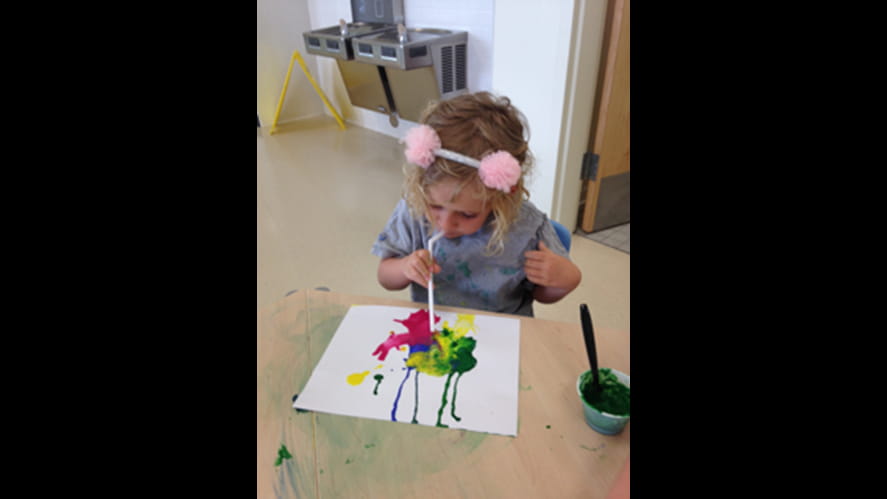"I'm pushing the paint with my straw!"

"I'm pushing the paint with my straw!"
"I'm pushing the paint with my straw!"
The inspiration for this sensory experience came from the joy and wonder that the children displayed when previously presented with a straw and paint. The children were fascinated by this creative and exploratory process, delighting in telling others about what they could see, what they thought and what it made them wonder about, as they blew bubbles in their soapy liquid. Whilst having plentiful opportunities to explore this sensory experience in the following days, the children continued to express an interest in revisiting this activity, so the teachers thought about how they could honour this request and also extend the children’s learning.
The children were presented with a variety of different coloured watery paints, a straw and a piece of paper. The teachers’ posed the question “how can you make the paint move across the paper?” and then observed as the children began to investigate. At first, some of the children dipped their straws in the paint and dragged it across the paper, creating long, thin marks. Fingers were then pressed in the paint and used to smear it across the paper. Socks were also discarded as the children attempted to dip their toes in to the tiny paint filled cups. When all other avenues were explored the children revisited the straws, picking them up and experimenting with pushing air through them by blowing into them. Exclamations of delight were heard as the children moved their straw closer to the table and observed the paint moving from one side of the paper to the other. Ideas of how to move the paint faster were investigated and expressions of surprise were heard as the children observed how the colours changed as the paint mixed together.
This experience, whilst primarily being a sensory exploration, can also be considered an early scientific inquiry into forces, as the children investigate air pressure by pushing and pulling the air through the straw in order to make the paint move or change direction.
Science and art naturally overlap. Both are a means of investigation. Both involve ideas, theories and hypotheses that are tested in places where mind and hand come together—the laboratory and studio. Artists, like scientists, study—materials, people, culture, history, religion, mythology— and learn to transform information into something else. (The Art Institute of Chicago: Science, Art & Technology)